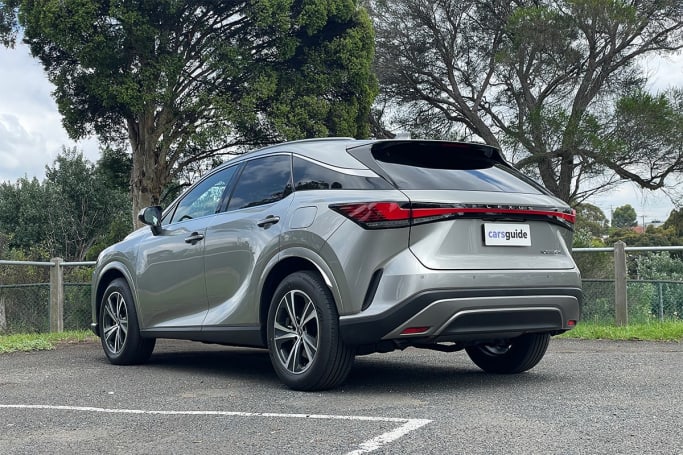
Is it illegal to lie down on the back seat of a car while it's being driven?
Is it illegal to lay down in the back seat of a car while driving? Yes, it is...
Browse over 9,000 car reviews

One of the most controversial taxes the Australian Government has enacted. Theoretically, it’s designed to raise more revenue to pay for road infrastructure funding by adding an additional tax on new vehicles the government deems as ‘luxurious.’
The Luxury Car Tax is based on the price of the vehicle and includes any options fitted, dealer delivery charges the Goods and Services Tax (GST), but only applies to vehicles that are less than two-years-old.
It was introduced during John Howard’s time as prime minister and enacted from July 1, 2000, at a time when the Australian car manufacturing industry was still strong and the tax was seen as helping to encourage consumers to choose locally made vehicles. The argument that it was only and ever a piece of protectionist legislation and that these days, when we don’t have a local car industry, it should no longer exist is another one often made by people who work at car manufacturers, and expensive ones in particular.
The LCT has thus come under fire as simply yet another tax on motorists. Most major industry bodies, including the Federal Chamber of Automotive Industries and the Australian Automotive Association, and several car manufacturers, have called for the LCT to be abolished.
It’s supposed to sound like a wondrous and fair example of wealth redistribution where people who can afford flashy cars tip in a bit extra for the rest of us.
It’s important to note, as people in the car industry often do while shouting and smacking their fists into their palms, that there is no such thing as a Luxury Boat Tax, Luxury Watch Tax (yes, some of them are as expensive as cars) nor Luxury Helicopter Private Jet Tax. Which is… interesting.

The Luxury Car Tax is applied at a rate of 33 per cent of the value of the vehicle above the threshold the government sets for what it determines a luxury vehicle to cost. For example, for the 2023-24 financial year the Australian Tax Office (ATO) has set the threshold at $76,950 for a luxury car.
The luxury vehicle tax threshold is set by the ATO each year, and it includes a higher rate for what the government declares ‘fuel efficient’ vehicles (as an enticement for people to buy them instead of thirsty ones). At present, the government calls any car with an official combined cycle fuel economy rating of 7.0-litres per 100km or less as fuel efficient and it has a higher LCT threshold. (Remember, higher is good in this context, the higher point at which it kicks in the less a buyer has to pay.)

Somewhere deep inside the ATO someone with a calculator, and probably a pocket protector and an anorak, comes up with these numbers that set the luxury car tax limit.
Yes, the luxury tax on cars is increased every year to keep up with the evolution of the car market. A decade ago the figure was set at $59,133 for standard luxury cars and $75,375 for fuel efficient models.

In a bid to encourage buyers into more fuel efficient cars, how much extra tax you pay is cut for those that achieve a fuel figure under 7.0L/100km. For 2023-24 the difference between the two is $12,382, which means buyers of fuel-sipping cars or electric vehicles will save 33 per cent tax on that amount.
However, the government announced in late 2023 that the definition of a fuel-efficient vehicle will be dramatically changed from July 1, 2025, with the cut off set to drop to 3.5L/100km. This will push any model with fuel economy between 3.6 and 6.9L/100km into the lower threshold and therefore increase the amount of tax the government collects.
The current 2023-24 threshold is set at $89,332 for fuel efficient vehicles and $76,950 for everything else.

It doesn’t, it’s a federal tax and applied across the country. That means the Luxury Car Tax threshold in NSW or Victoria or wherever you live is the same.
| Financial year | Fuel efficient vehicles | Other vehicles |
| 2023–24 | $89,332 | $76,950 |
| 2022–23 | $84,916 | $71,849 |
| 2021–22 | $79,659 | $69,152 |
| 2020–21 | $77,565 | $68,740 |
| 2019–20 | $75,526 | $67,525 |
| 2018–19 | $75,526 | $66,331 |
| 2017–18 | $75,526 | $65,094 |
| 2016–17 | $75,526 | $64,132 |
| 2015–16 | $75,375 | $63,184 |
| 2014–15 | $75,375 | $61,884 |
| 2013–14 | $75,375 | $60,316 |
| 2012–13 | $75,375 | $59,133 |
| 2011–12 | $75,375 | $57,466 |
Source: ato.gov.au
You can go straight to the source and visit the Australian Tax Office, which outlines the tax rates and thresholds for each year.
Comments